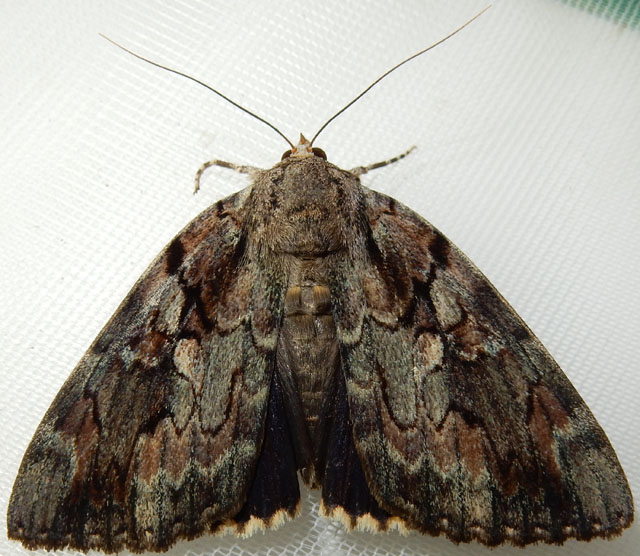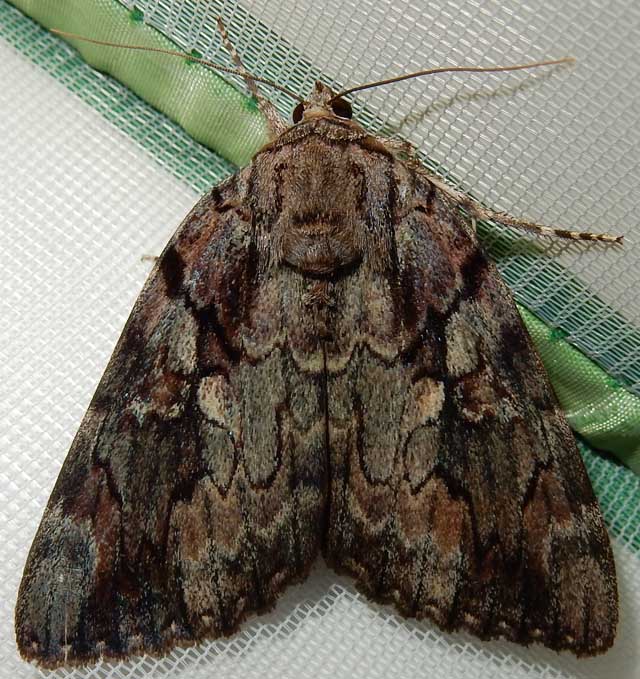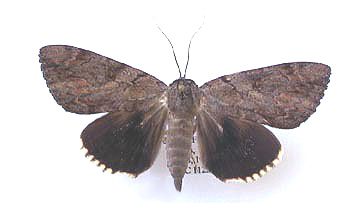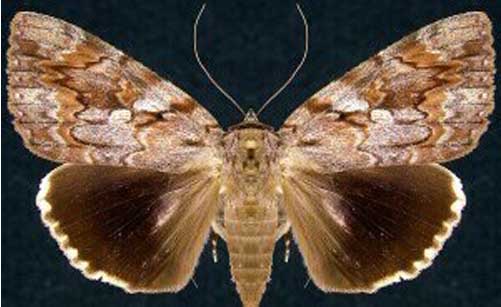Catocala agrippina
kah-TOCK-uh-lahM
a-grih-PEE-nuh
Strecker, 1874

The Agrippina Underwing, Louisiana, courtesy of Vernon A. Brou.
This site has been created by
Bill Oehlke.
Comments, suggestions and/or additional information are welcomed by Bill.
| TAXONOMY:
Superfamily: Noctuoidea
Family: Erebidae, Leach, [1815]
Subfamily: Erebinae, Leach, [1815]
Tribe: Catocalini, Boisduval, [1828]
Genus: Catocala, Schrank, 1802
|
DISTRIBUTION:
Catocala agrippina
(wingspan: 75-85mm) flies from southern New Jersey south to Florida,
west to Texas and eastern Oklahoma and possibly as far north
as southern Indiana and southern Illinois, although I have not seen records of it in Indiana or Illinois.
It has also been reported in
Alabama,
Arkansas,
Georgia,
Kansas,
Kentucky,
Louisiana,
Maryland,
Mississippi,
Missouri,
New York,
North Carolina,
Ohio,
Pennsylvania,
South Carolina, and
Tennessee.
I have added Maryland to the list based on the following submissions from Jonathan Willey.

Catocala agrippina, Cambridge, Dorchester County, Maryland,
August 6, 2016, courtesy of Jonathan Willey, id confirmed by Larry Gall.

Catocala agrippina, Cambridge, Dorchester County, Maryland,
August 6, 2016, courtesy of Jonathan Willey, id confirmed by Larry Gall.
I believe Jonathan Willey's identification of the specimen directly above is correct, and I think this is the first time the species has been confirmed in Maryland.
The head and body are blackish grey (dorsal) and greyish white (ventral).
In the male, the forewings are grey-black with considerable reddish brown (distinguishing characteristic), particularly outside the pm line;
the transverse lines are black, darker toward the costa, much lighter near the inner margin. The reniform is indistinct and brown and the sub-reniform is almost
obsolete (more distinct and open in female), but lighter than surrounding areas.
| 
Agrippina, Texas, courtesy of Dale Clark. |
The lower wings are black, with greyish hairs at the base and abdominal margin. The fringe is white, only partly cut with black at the terminations of the veins.
In the females, which tend to be slightly larger, the ground colour of the wings is lighter, and the reddish brown sub-marginal band is
more conspicuous. All the lines, as well as the reniform and sub-reniform spots, are distinct and much sharper than in the male.
On the forewing ventral surface, the primaries are white (yellowish tinge) with a broad marginal band that is black inwardly and greyish exteriorly.
The mesial and sub-basal bands are black and are connected along the inner margin. The fringes are white, edged outwardly with black.
The hindwing underside is white (yellowish tinge), with black marginal and mesial bands with a narrow space between them. The fringes are white.
Harvey described the slightly larger greenish form "subviridis" in 1877.
FLIGHT TIMES AND PREFERRED FOOD PLANTS:
In Texas Catocala agrippina flies from early June to early July.
Flight times are the same in northeastern Oklahoma.
In Indiana specimens have been taken mid to late August.
Moths come in to lights readily and also to bait. They can be found on tree trunks in the wild.
The Catocala agrippina caterpillar shows a preference for Carya cordiformis (bitternut hickory). Other Carya species will probably also work.
SCENTING AND MATING:
Catocala agrippina females
emit an airbourne pheromone and males use their antennae to track the
scent plume.
EGGS, CATERPILLARS, COCOONS AND PUPAE:
Eggs are deposited on tree bark in the fall and hatch the following spring.
Larval Food Plants
Listed below are primary food plant(s) and alternate food plants. It is hoped that this alphabetical listing followed by the common
name of the foodplant will prove useful. The list is not exhaustive, although some species seem very host specific.
Experimenting with closely related foodplants is worthwhile.
Carya cordiformis.....
|
Bitternut hickory
|
This page is brought to you by Bill Oehlke and the
WLSS. Pages are on space rented from Bizland. If you would like to become a "Patron of the Sphingidae/Catocala Sites", contact Bill.
Please send sightings/images to Bill. I will do my best to respond to requests for identification help.
Enjoy one of nature's wonderments: Live Saturniidae (Giant Silkmoth) cocoons.

Catocala agrippina, on my home computer only.

|

To show appreciation for this site, click on the flashing
butterfly to the left, a link
to many worldwide insect sites. |






